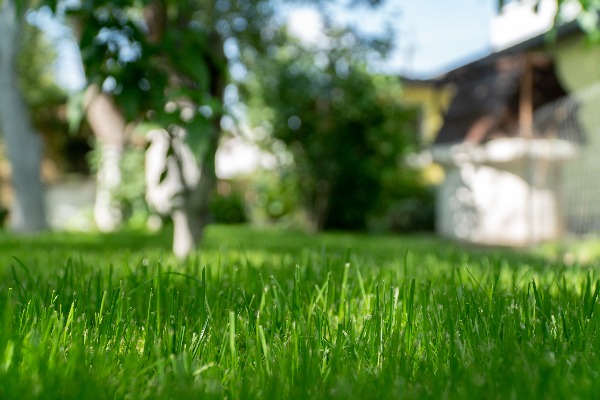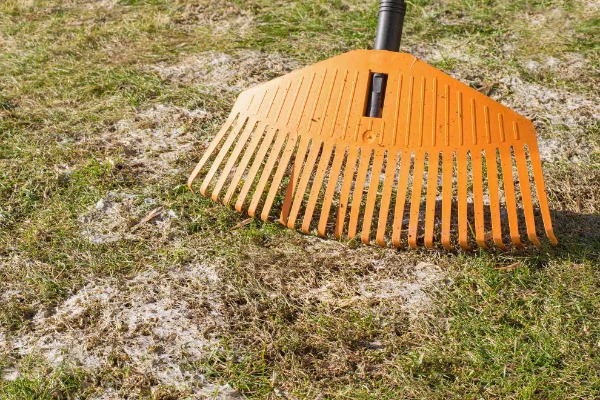Overseeding is one of the most reliable ways to rejuvenate a tired, thinning lawn, especially in a climate as seasonally dramatic as Illinois. The process introduces fresh seed into an existing lawn so it can thicken naturally, outcompete weeds, repair bare patches, and develop a more resilient root system before the next round of weather extremes arrives.
Knowing when to overseed in Illinois is just as important as knowing how to do it, and timing your efforts to match the state’s seasonal patterns will determine whether your investment produces lush, lasting results.

Many Illinois lawns lose density throughout the year due to environmental pressures and regular use. Summer heat can thin out cool-season turf, especially on high-traffic areas, while long winters can leave grass matted, patchy, or weakened. Overseeding addresses these issues by reintroducing vigorous new seedlings that help fill in sparse zones faster than natural spreading alone.
Once those seedlings mature, the overall turf stand becomes thicker, which naturally increases weed resistance, improves color, and boosts the lawn’s ability to withstand drought, cold, and foot traffic. In other words, overseeding ensures your lawn not only looks fuller, but also performs better through Illinois’ variable seasons.
Main Benefits Of Overseeding:

In Illinois, early fall is the ideal overseeding window, generally from early September through early October. Cool-season grasses, like Kentucky bluegrass, perennial ryegrass, and turf-type tall fescue, germinate fastest in cool air paired with warm soil, which is exactly what autumn provides. Days are still long enough for photosynthesis, nighttime temperatures are mild, and weed pressure is significantly reduced after the heat of summer. Overseeding too late risks poor germination, while doing it too early exposes fragile seedlings to heat stress or drought.
While fall is the clear favorite, some Illinois homeowners consider spring overseeding when lawns emerge from winter with visible bare patches. Spring overseeding is possible but less predictable. Soil warms slowly, weed competition rises quickly, and many people apply pre-emergent crabgrass control that also blocks grass seed from sprouting. For the best outcome, spring overseeding should be timed before crabgrass preventer applications and paired with attentive watering.

Start preparation by mowing the lawn shorter than usual, typically around 2 to 2.5 inches, to help the new seed more easily reach the soil. After mowing, remove as much debris, clippings, and surface thatch as possible. A thin layer of thatch is fine, but anything over roughly half an inch will block seeds from reaching the soil and retaining moisture. Raking or dethatching the lawn helps loosen the surface and exposes more bare soil pockets where new seedlings can establish.
If your lawn struggles with compaction, aeration before overseeding opens the soil structure and allows seedlings to root more deeply. Once the soil is clean, loose, and accessible, the overseeding process becomes far more effective.

Once the lawn is prepped, the actual overseeding process is straightforward, but precision matters:
1. Choose The Right Grass Seed: Illinois lawns thrive on cool-season blends. A mix of Kentucky bluegrass for color and density, ryegrass for quick germination, and turf-type tall fescue for durability creates a well-balanced lawn suited for the region.
2. Use A Spreader For Even Coverage: Broadcast or drop spreaders distribute seed consistently, helping avoid thin areas or clumped patches. Follow the recommended overseeding rate on the seed label, which is different from a full-lawn establishment rate.
3. Lightly Rake Or Drag The Area: A gentle rake or lawn drag helps push seeds into the soil surface. Seeds don’t need to be buried deeply; they simply need firm contact with the soil to germinate.
4. Water Gently But Consistently: New seed needs steady moisture. Aim for light, frequent irrigation, usually once or twice a day, until the seedlings reach mowing height. After that, transition to deeper, less frequent watering to encourage strong root development.
5. Avoid Heavy Traffic: Limit activity on the lawn while seedlings are establishing. Young grass is easily damaged and needs time to anchor itself into the soil.

The weeks immediately following overseeding are critical. As new grass begins to emerge, mowing should resume only when seedlings reach the same height as the rest of the lawn. Use a sharp mower blade and avoid cutting off more than one-third of the grass blade at once. A balanced fertilizer can also promote early growth, but avoid applying weed control products until new grass is fully established, as most herbicides can harm seedlings and stall growth.
Many overseeding failures come from avoidable oversights. Spreading seed without addressing soil compaction, skipping fall timing, watering inconsistently, or applying weed control too close to overseeding can all derail the process. The best way to ensure your lawn gets the repairs it needs is to trust a lawn care professional with overseeding efforts.
Merrill Landscape Services offers the best overseeding services in Champaign, IL, and our other lawn care services help ensure that your grass is able to thrive through the growing season. Contact us today to get your Illinois lawn back in shape!